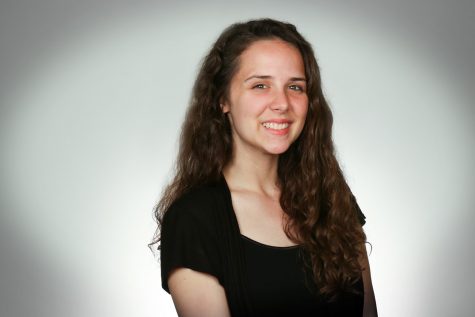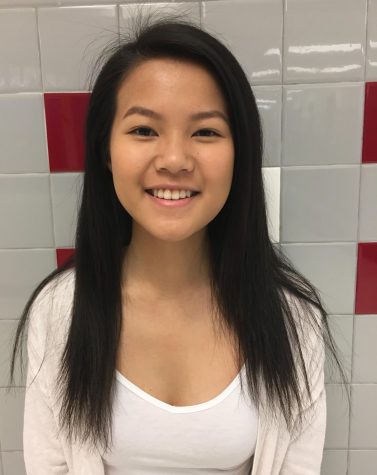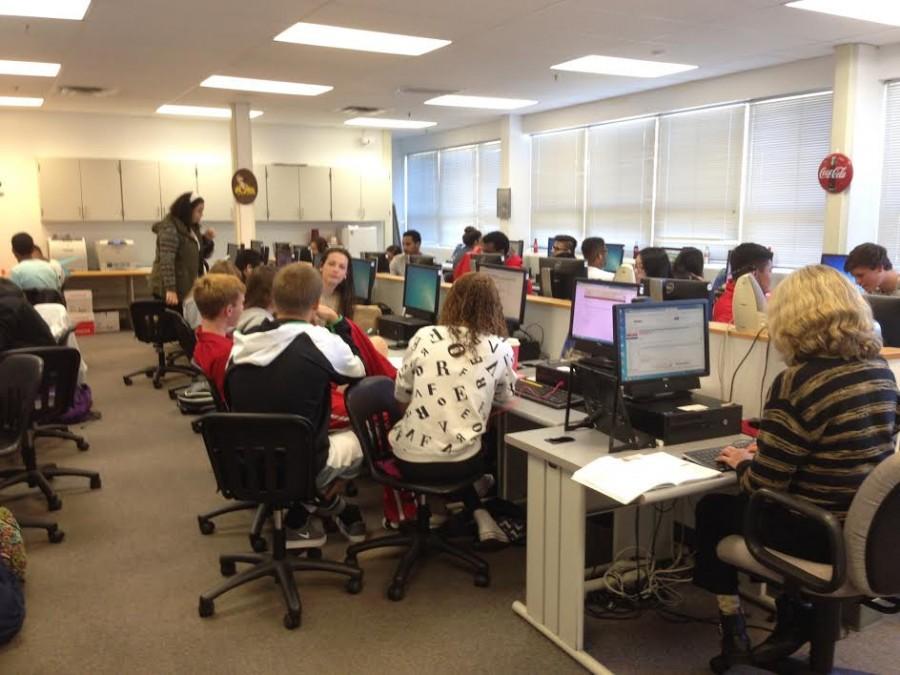Class sizes are far too high
The traditional image of a high school classroom has several key components: a blackboard, a teacher and around 20-25 students among them.
Any AHS student knows that that is not always the case. When a student finds themselves sitting in a room with upwards of 50 students, they begin to rethink the merit of the class, and of the school itself.
A class that big inhibits one of the most significant features of the high school class– one-on-one interaction with the teacher.
The teachers are wary of such classes because they know it will be harder for struggling students to get help.
“For the past two years our class has been really big in Health, Driver’s Ed. and P.E.. It has certainly had a huge impact in the classroom because we were trying to jam 50 to 56 kids in the classroom, and it’s really hard to give kids any individual attention when the class is that big,” P.E. teacher Pat Hughes said.
Students in Driver’s Education and Health can hardly find a seat, let alone get the singular attention that they need when they are in a class of 50+ students.
In order for teachers to truly teach, they also need to have the ability to get to know their students and the way that they learn. With the increasing class sizes, that becomes nearly impossible.
“There are so many different styles of learning… so it’s kind of hard to reach everybody that way,” Hughes said.
Without that interaction between teacher and student, the high school classroom devolves into nothing better than a college lecture hall.
There’s nothing particularly wrong with that, except that the vast majority of high school students aren’t quite prepared for such a big leap.
They need the stepping stone high school offers with more interaction than college, but less interaction than middle school, not to be flung into a college simulation at 15 years old.
Not only do teachers have to worry about issues of interaction, double the students inevitably leads to double the work.
“It’s more work for the teachers in terms of preparation, and in terms of grading papers,” Physics teacher Carmelo Alba said.
When teachers have to spend days grading papers, they lose extra time that they could be planning interactive lessons for their students.
So if having more student only leads to less learning opportunities for them, and more stress for teachers, why do these large classes exist?
“I think they wanted to keep the class sizes down in other courses,” Hughes said.
The school system prioritizes core classes, so it makes sense that they would generally push the extra students to electives, but the problem persists in all kinds of classes to varying degrees.
Another and perhaps more significant reason is because of the school’s budget.
Fairfax County is looking for a way to cut down the amount they have to allocate to schools in light of a prospective 100 million dollar deficit in coming years, and are trying to adjust to the ever-increasing number of students pouring into the system.
“Fairfax County is undergoing some budget savings,” Alba said. “It was actually discussed a year ago that if they put one extra kid in each class they would save a couple million dollars,”
Well, in some classes, they have definitely put more than one extra kid. Sometimes, classes do not even have enough desks and chairs to accommodate all of the students.
Several classes are packed with students to the point where there is no space to simply shift a chair. Even so, when new students arrive, teachers have to request the school for an extra desk and seat.
In classes like Business, Journalism or Photojournalism, a computer is a necessity to complete assignments.
However, some of these classes can get so large that some of the students are forced to share computers and work spaces with other students.
In science classes, students have to share resources such as microscopes and scales. When performing labs, students run a greater risk of dangerous mistakes occurring or some students getting more chances for hands-on learning than others.
Lack of individual student attention is not the only problem arising from large class rosters.
Most likely, classrooms filled with that many students will result in rowdiness and misbehavior.
If all 30-50 students are talking at once, the noise level can get out of hand.
This makes it difficult for teachers to properly gain the attention of students, leading to their frustration.
The process of calming a class wastes time that could be used to further elaborate on a lesson. Because of this, teachers are forced to rush their lessons, leaving students lost and confused in subjects.
The students feel the effects, especially when they look around and realize that the other students are struggling too.
“It makes it more difficult for the teacher to go fully one-on-one with the student,” junior Kimberly Romero said. “so the student doesn’t really get the attention that they should get in order to learn.”
Romero believes that they cram so many students in one class “because they don’t have space in other classes.
It’s a common theory, and quite curious considering a whole corridor is yet to be used, and AHS has 25 trailers.

Senior Sadie Modica has been on the A-Blast staff for three years. In addition to her responsibilities as Co-Editor-in-Chief, Sadie is an IB Diploma candidate...

Active member in various honor societies and clubs, senior Julie Nguyen has been on The A-Blast staff for three years. She is currently the Health Editor...





